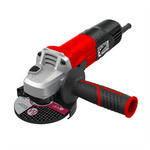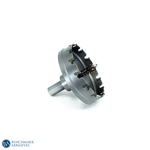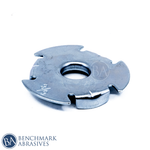Metal Files
Metal files are classic hand cutting tools for shaping, refining, and smoothing materials like metal, wood, and plastic. These tools feature hardened steel bars etched with cutting teeth and come in a wide range of shapes, lengths, and cut types to suit different applications. Whether you're filing flat surfaces, rounding out holes, or sharpening tools, metal files offer control and precision where power tools may fall short. From coarse cuts for quick material removal to fine finishes for detail work, the variety of options allows users to match the file to the job. Many files are also compatible with detachable handles, giving you better grip and control during extended use.
Common Uses for Metal Files
Metal files are versatile tools used across several trades and applications:
- Metalworking: Deburring edges, cleaning up welds, and refining machined parts.
- Woodworking: Shaping contours, smoothing curves, and removing small amounts of material.
- Plastics: Trimming, detailing, and cleaning up rough spots on plastic components.
- Sharpening Tools: Maintaining edges on tools like axes, saws, and garden tools.
Explore all cutting tools from Benchmark Abrasives and find the right tool for every job.
Factors to Consider When Buying a Metal File
Choosing the right file means understanding how cut, shape, and size impact performance.
Type of Cut:
- Bastard Cut – Coarse teeth for fast stock removal.
- Second Cut – Medium coarseness for general-purpose smoothing.
- Smooth Cut – Fine teeth for finishing and detail work.
Shape and Profile:
- Flat Files – Best for flat surfaces and general-purpose work.
- Half-Round Files – Tackle both curved and flat surfaces with one tool.
- Round Files – Great for enlarging holes and working on concave surfaces.
- Mill Files – Often used for sharpening tools or achieving a fine finish.
Length:
File lengths typically range from 6 to 12 inches. Longer files remove more material per stroke, while shorter files offer better control for precise tasks.
Handle Compatibility:
Many files are sold without handles, so it’s worth checking if they can accommodate a standard wood or plastic handle for a safer, more comfortable grip.
Materials and Configurations
The material a file is made from affects its durability and lifespan:
- High-Carbon Steel – Known for hardness and longevity; maintains sharpness well.
- Alloy Steel – Adds resistance to corrosion and wear for demanding environments.
Tips for Use
Using a file correctly improves performance and extends tool life:
- File with a forward stroke only. Apply pressure as you push, and lift on the return to avoid dulling the teeth.
- Secure your workpiece. Always clamp the material so it doesn’t move while filing.
- Start coarse, finish fine. Begin with a rougher cut and move to finer cuts for smooth finishing.
Cleaning and Maintenance
Proper care keeps your files in good shape for the long haul:
- Clean after use. Use a file card or wire brush to clear out debris between the teeth.
- Prevent rust. Store in a dry place and lightly oil the surface if needed.
- Check the handle. Make sure it’s tight and free of damage to avoid slips or injury.
Free Shipping & Easy Returns
We offer free shipping on all orders over $100—no codes, no catch. If you're not satisfied with your purchase, returns are quick and simple. Just reach out by email, chat, or phone, and we’ll get you set up with an RGA and return shipping details.







































































